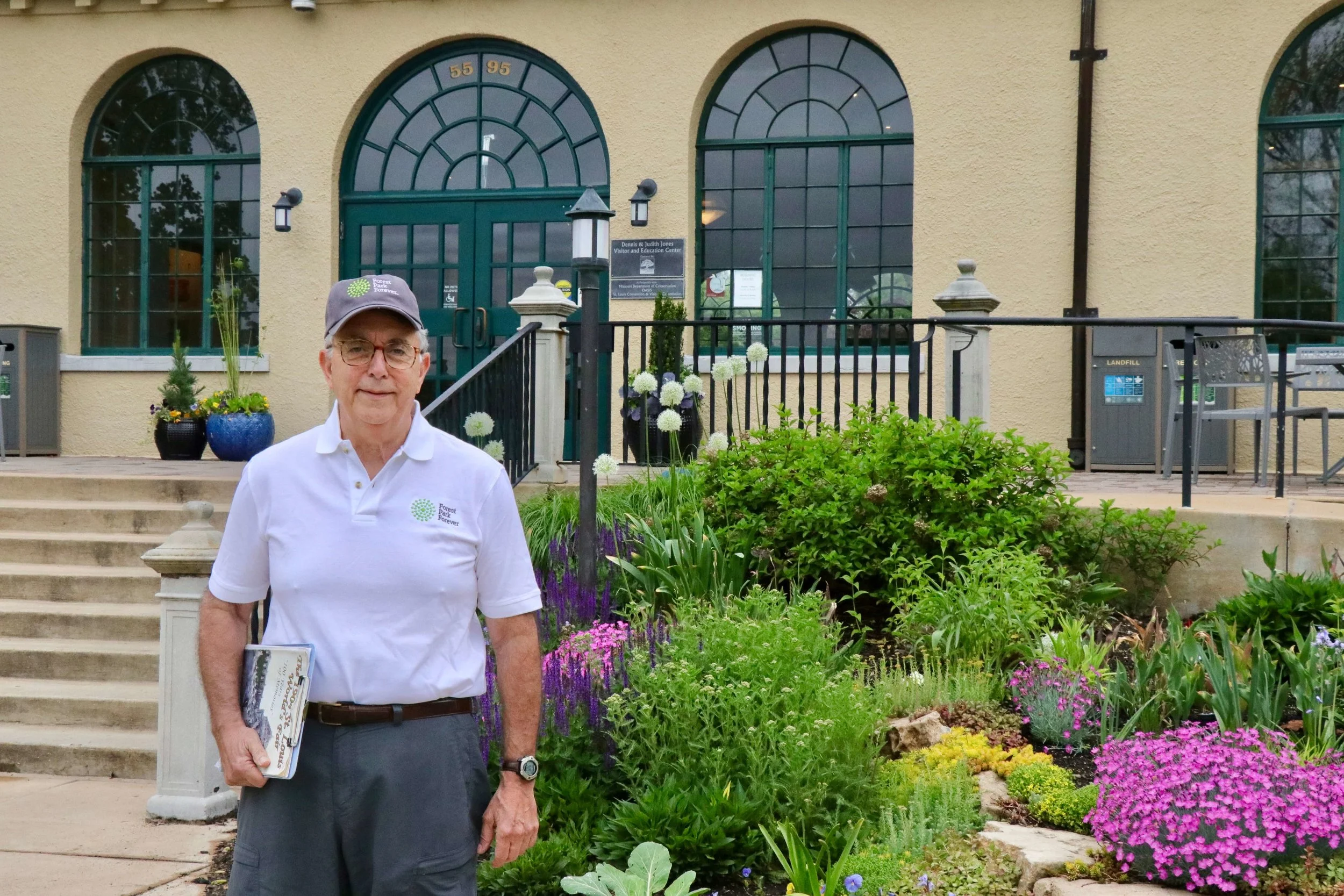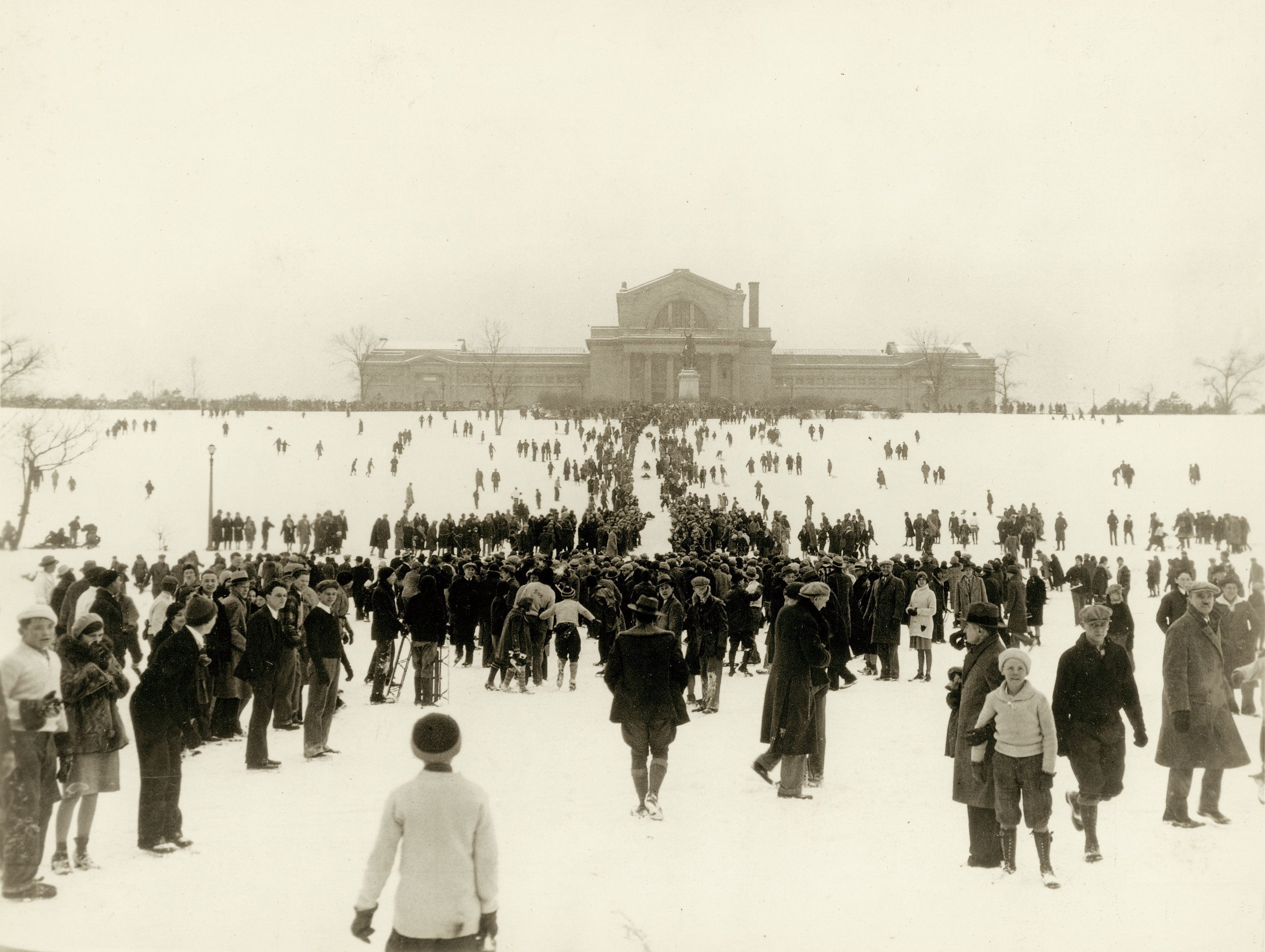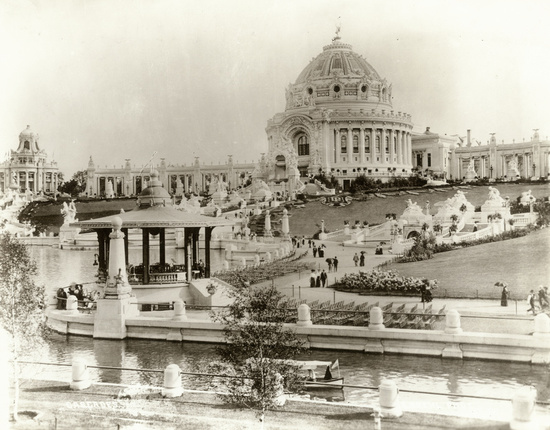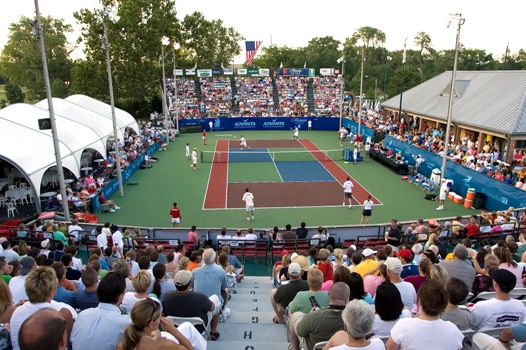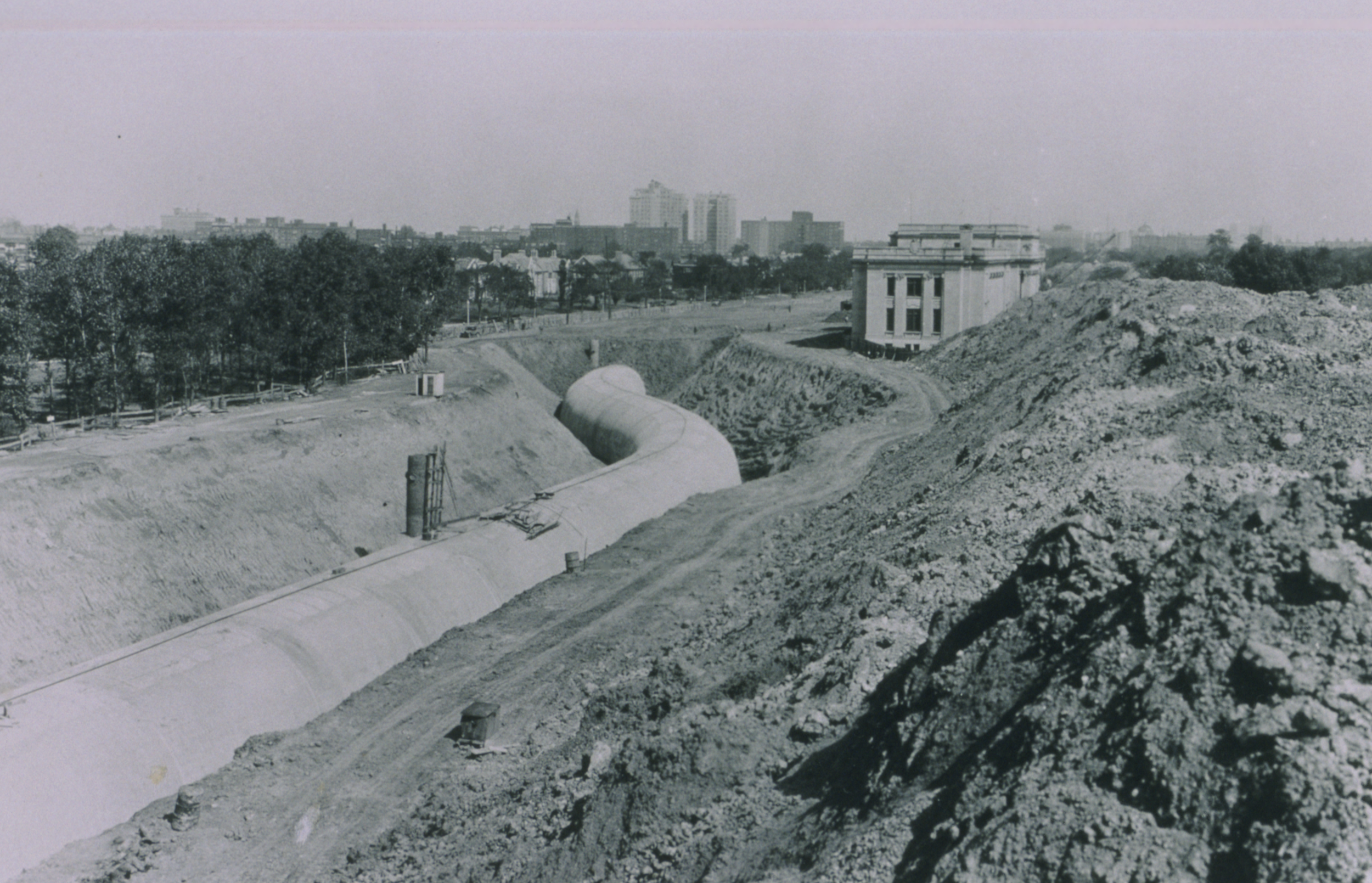Understanding the Past: Forest Park Then and Now Tour
On Thursday mornings at 9:30, longtime Forest Park Forever volunteer Alan Kretchmar leads a fascinating Then & Now Tour through Forest Park. The tour begins at the Dennis & Judith Jones Visitor and Education Center, where the group convenes before stepping outside the back doors to imagine a Forest Park of years past.
Our small group of four heads out on a dreary morning, umbrellas in tow because we anticipate that it will rain before the tour’s end. Just moments outside the Visitor Center, Kretchmar stops and asks us to look back at the Spanish architecture and clock tower at the Visitor Center. He shares that the original building was built in 1892 as a streetcar shelter, and all that remains from that first structure is the clocktower, which was meticulously restored in the early 2000s during the first major restoration of the Park.
As much as I’m intrigued to learn this information, I’m also embarrassed that I didn’t know this bit of history after all the years of using the Visitor Center as my hub for running.
We take the path north towards the Missouri History Museum as Kretchmar gives an overview of the Park’s celebrated opening in 1876 to its almost slip into permanent disrepair in the 1980s. He mentions the founding of Forest Park Forever in 1986 and how it, in partnership with the City of St. Louis Department of Parks, Recreation and Forestry, maintains the Park. We talk about the trails, the flower gardens and the landscaping.
The tour is interactive, and one of the women on the tour, who is visiting from Georgia, has done her research. Kretchmar answers all of her questions:
The Park is 1,300 acres, 500 acres larger than New York City’s Central Park. The Muny is the largest and oldest outdoor theater. Yes, the Saint Louis Zoo is free. So are the Saint Louis Art Museum, Saint Louis Science Center and the Missouri History Museum.
“And if you want, you can get free tickets to the Muny and Shakespeare in the Park is also free,” I add.
“Amazing,” she responds. “Everything is free.”
As we stand at the base of the steps leading to the Missouri History Museum, peeking through the windows at the Thomas Jefferson statue, we learn that it was the first Jefferson Memorial, dedicated in 1913 – to commemorate his role as president during the Louisiana Purchase in 1803. The statue sits in a loggia that was once open to the outdoor elements before it was enclosed for protection in 1985.
The tour goes behind the museum, and we make our way to the Dwight Davis Memorial Tennis Center. Davis was the national outdoor men’s tennis doubles champion from 1899 to 1901, but his legacy extends far beyond the tennis court. He was St. Louis’s Parks commissioner from 1912 to 1915, where he transformed Forest Park from a formal Victorian Park to a space that welcomed recreation and civic events. He’s famously noted for his belief, “If we can’t have the grass and the people in our parks, let’s sacrifice the grass.”
I look around as Kretchmar talks about Davis’s legacy, and I see it all around us. There are runners, bikers, people out walking their dogs, others chasing small children. It’s hard to imagine a time when the Park wasn’t used for recreational purposes.
We stop at the corner of the Emerson Grand Basin, and Kretchmar pulls out a map of the 1904 Louisiana Purchase Exposition, which is better known as the 1904 World’s Fair. It starts to rain, so we huddle together under our umbrellas to look at the map, while trying to envision what it must have looked like. Fifteen palaces, each ranging between 12-20 acres in size. The view of the Saint Louis Art Museum obstructed by Festival Hall, the centerpiece of the World’s Fair.
As we begin our walk back to the Visitor Center, we cross Picnic Island and stop to take photos of the Saint Louis Art Museum, appreciating its beauty and its historic past.
Time to test Your Forest Park knowledge. Did you know that:
The Democratic party held its national convention in St. Louis in 1876 and that many of the delegates attended the opening-day ceremonies of Forest Park.
There were seven streetcar lines that served Forest Park, carrying more than 2.5 million Park visitors a year. One of the main ways to enter Forest Park from a streetcar was to walk into the Park across the Victorian Footbridge, which you can find here.
The Saint Louis Art Museum was first the 1904 World’s Fair Palace of Fine Arts.
The joy of sledding down the iconic Art Hill dates back to 1905 after trees were removed for the World’s Fair.
The River des Peres, which ran through the Park, was buried underground at some point in the 1930s because it was deemed a nuisance.
Over 100,000 people crammed onto Art Hill in 1927 to welcome Charles A. Lindbergh after his nonstop flight from New York to Paris.
The Jewel Box re-opened in 2003 after a major restoration effort.
The American Planning Association named Forest Park a “Great Public Space” in 2013.

